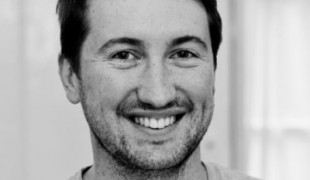- 5774
- 481
- 10
- 10
- 0
- Help Ukraine
About the solution
The device, a patented prototype, was first built as a thesis project when Christopher was a student. It features a forward-facing 3D depth-mapping camera on the top, along with dual eye-tracking devices pointing in at the wearer's eyes.
This technology allows users of electric wheelchairs to navigate without their hands. The technology would also allow users to communicate to a robotic platform when they would like to use an object, such as a glass of water.
The headset is connected to a software on a linked computer that creates a 3D map of the environment in front of the user, based on the camera's output. By combining this data with the output of the eye-trackers, the direction of the user's gaze can be deduced, allowing the software to determine what they're looking at within the 3D map. This allows the technology to perform daily tasks to help the user, such as activating the controls of an electric wheelchair, or instructing a robotic arm to grab an object such as a bottle of water – all the user would have to do is look at those things.
"My interest in this technology grew out of seeing how my mother-in-law struggled with eye-tracking devices as an ALS patient. The latest version of our device can be worn as a pair of ski goggles with cameras on top and eye-trackers embedded in the lenses, making it very easy for patients to use it over long periods of time as it moves with them”, the inventor explained.
Adapted from: https://bit.ly/2Zidry8
https://bit.ly/2Zeey5J
This solution shall not include mention to the use of drugs, chemicals or biologicals (including food); invasive devices; offensive, commercial or inherently dangerous content. This solution was not medically validated. Proceed with caution! If you have any doubts, please consult with a health professional.
DISCLAIMER: This story was written by someone who is not the author of the solution, therefore please be advised that, although it was written with the utmost respect for the innovation and the innovator, there can be some incorrect statements. If you find any errors please contact the patient Innovation team via info@patient-innovation.com
-
-
1010
-
9
-
27709

Mother creates device to help his son to walk again
WALKING: Walking
WALKING WITH A WALKING AID: Walking with a walking aid
Cerebral Palsy
Assistive Daily Life Device (to help ADL)
Body-Worn solutions (Clothing, accessories, shoes, sensors...)
Walking Aid (wheelchair/walker/crutches)
Impaired movement
Restoring mobility
Managing Neurological Disorders
Maintaining Balance and Mobility
Caregiving Support
Neurology
Pediatrics
Physical Medicine and Rehabilitation
Israel
-
-
-
1035
-
4
-
26523

Morph Wheels - Foldable wheels for wheelchairs
MOVING IN A WHEELCHAIR: Moving using a wheelchair.
CAREGIVING
Traveling
Urban exploration
Assistive Daily Life Device (to help ADL)
Walking Aid (wheelchair/walker/crutches)
Restoring mobility
Promoting self-management
Preventing (Vaccination, Protection, Falls, Research/Mapping)
Caregiving Support
Neurology
Orthopedics
Rheumatology
Mobility issues
United Kingdom
-
-
-
721
-
3
-
20463

Paraplegic invents Do-It-Yourself Handcycle combining a bycicle and a wheelchair
MOVING IN A WHEELCHAIR: Moving using a wheelchair.
Cycling
Riding
Urban exploration
Walking Aid (wheelchair/walker/crutches)
Assistive Daily Life Device (to help ADL)
Paralysis of the legs and lower body
Restoring mobility
Promoting self-management
Promoting inclusivity and social integration
Neurology
Physical Medicine and Rehabilitation
Mobility issues
Solutions for Disabled people
Germany
-
 en
en